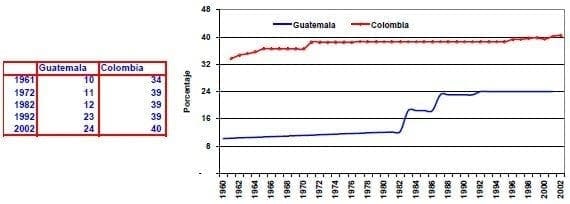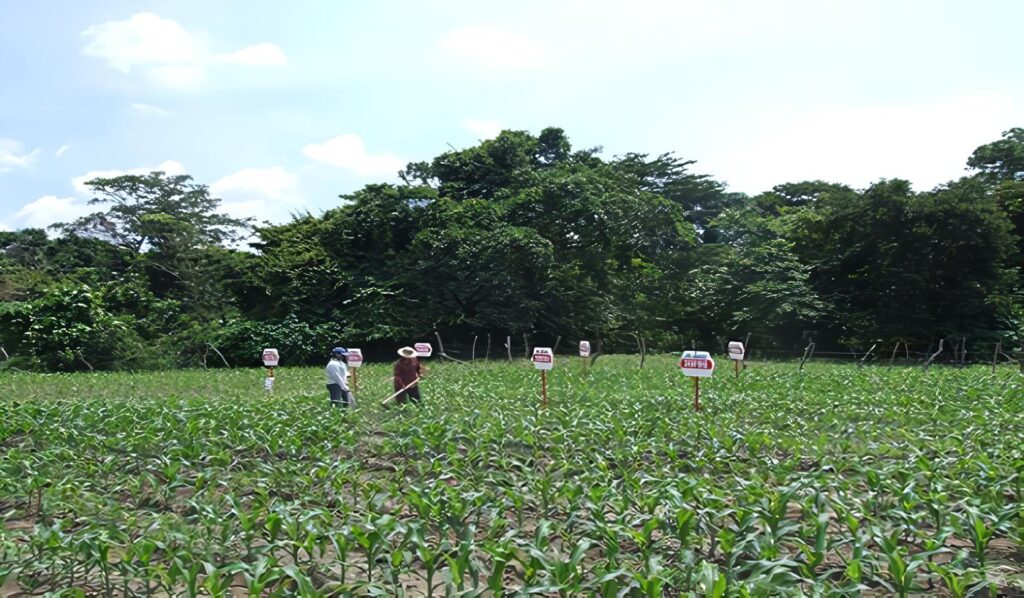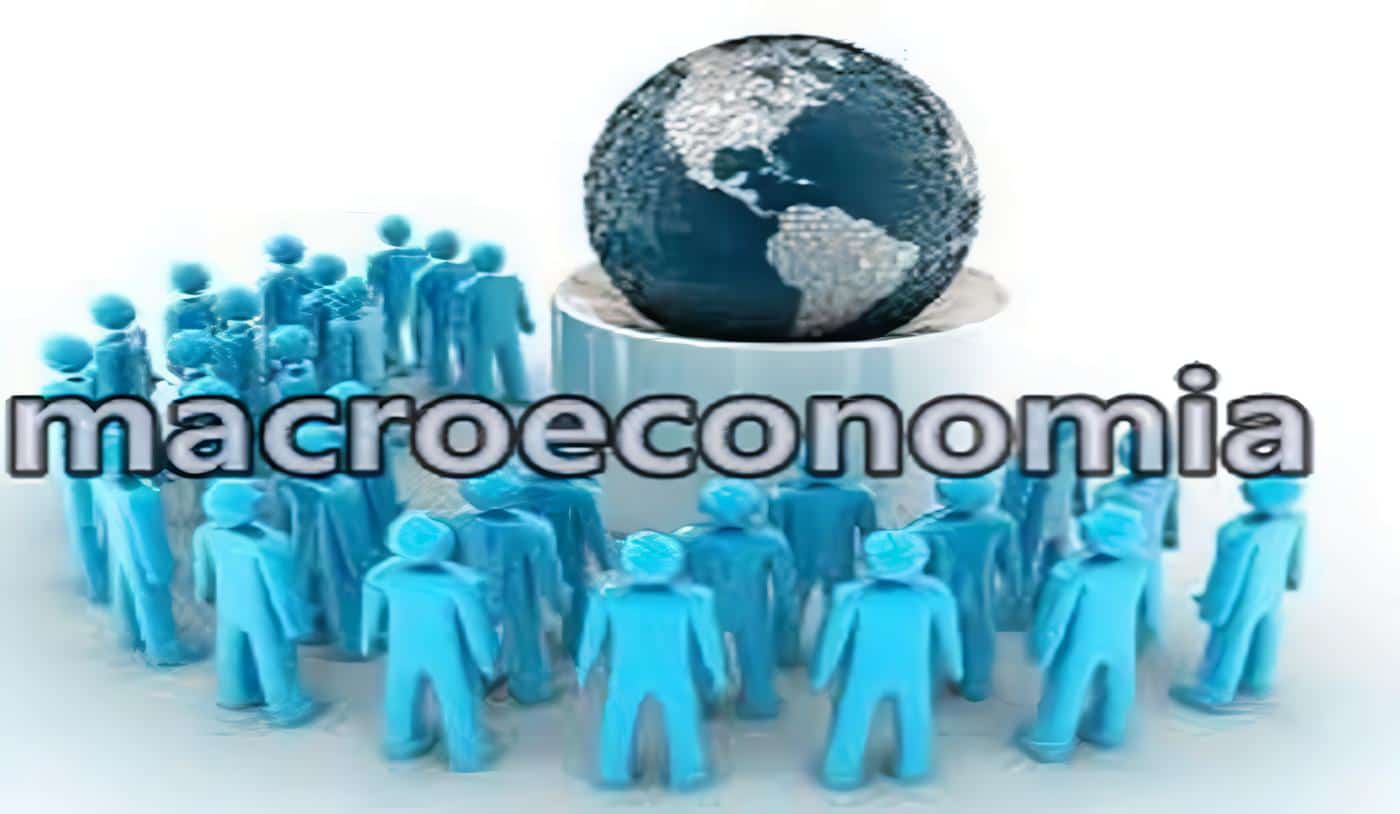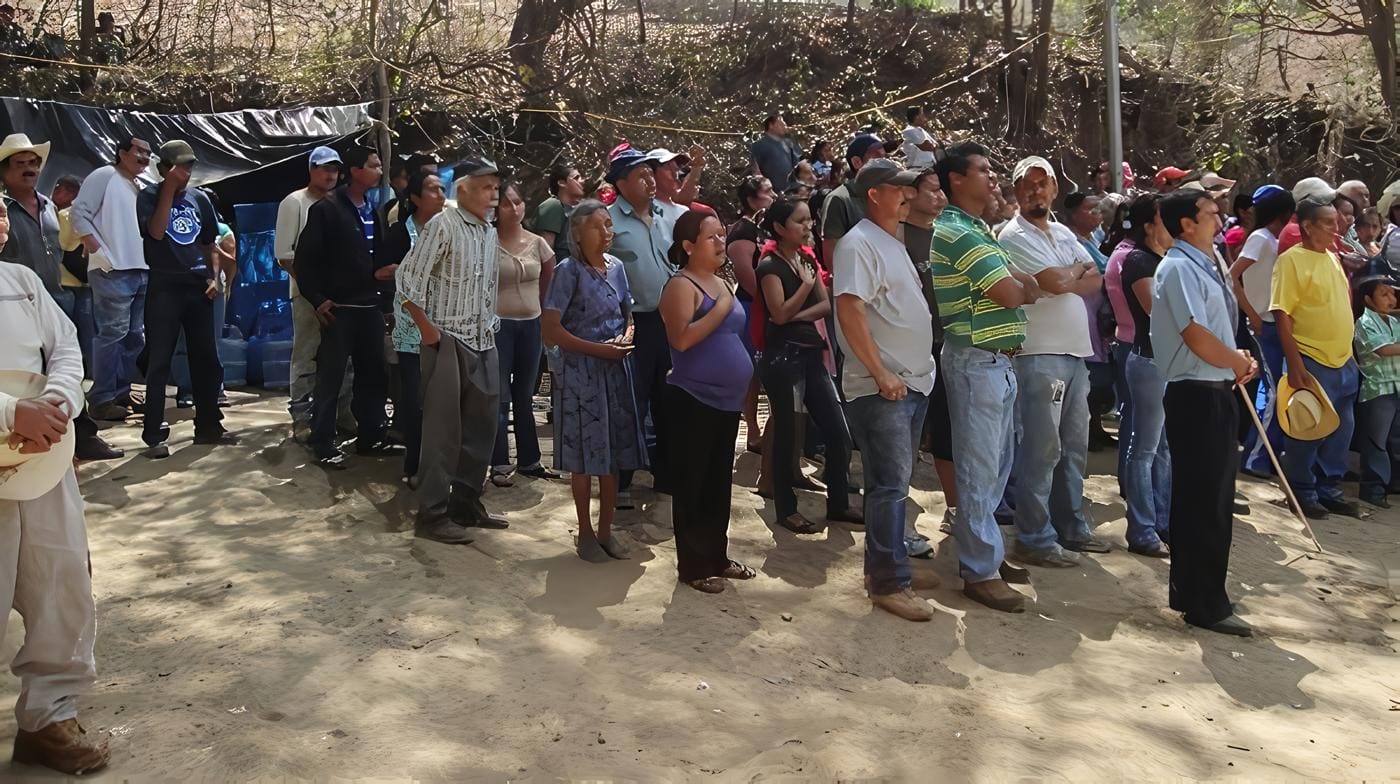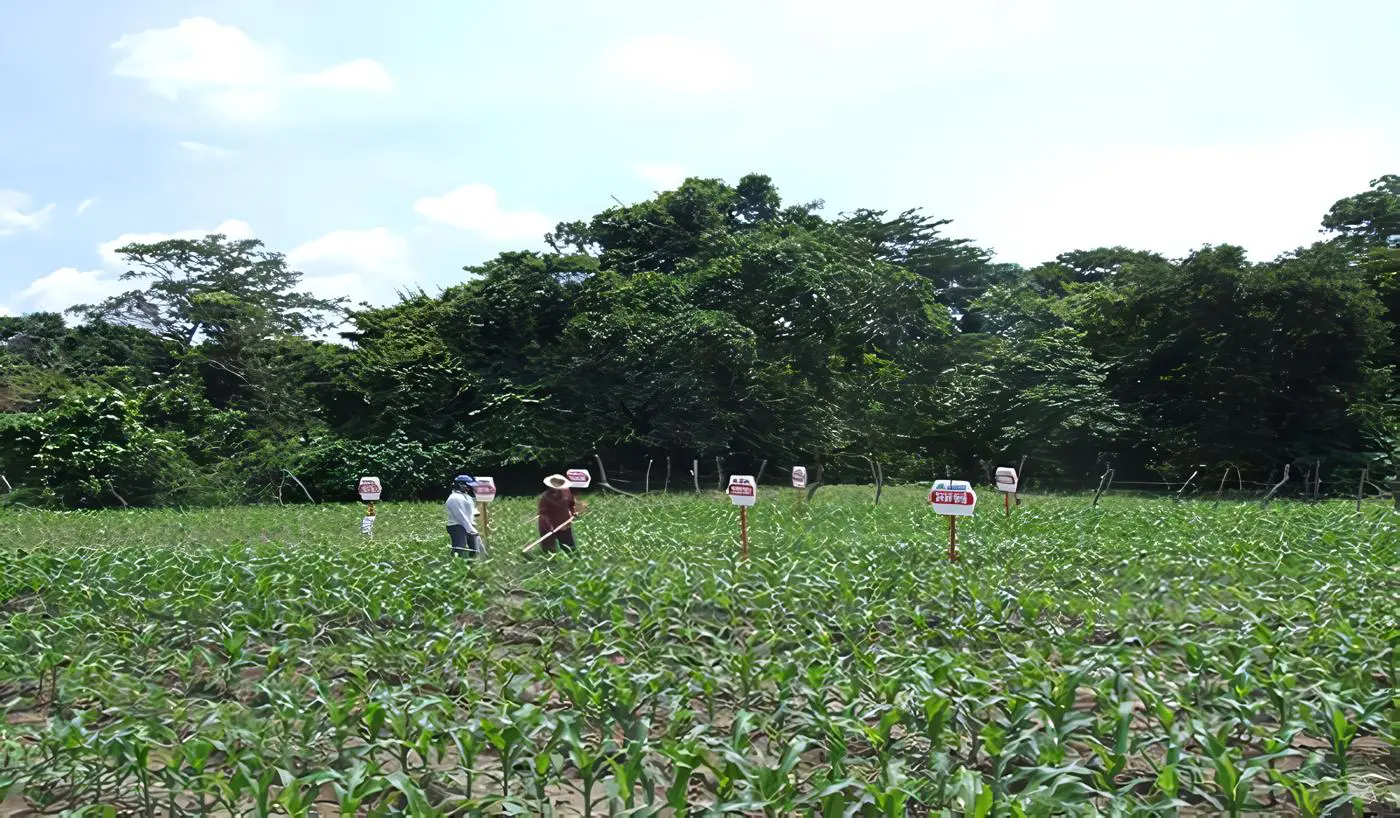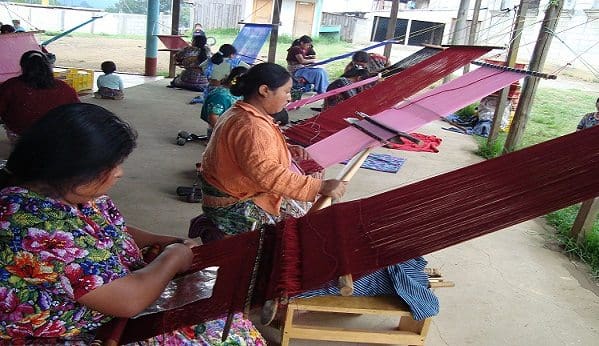Conozca los indicadores del sector agropecuario entre Colombia y Guatemala:
Valor agregado de la agricultura en US $ constantes de 2000
Fuente: Banco Mundial
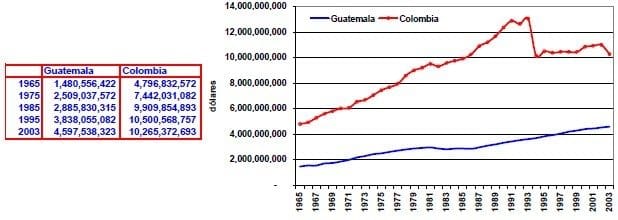
Valor agregado de la agricultura en US $ corrientes
Fuente: Banco Mundial
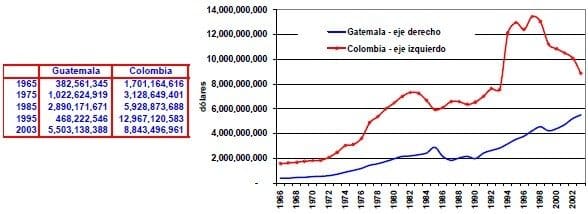
Valor agregado de la agricultura en moneda local constantes
Fuente: Banco Mundial
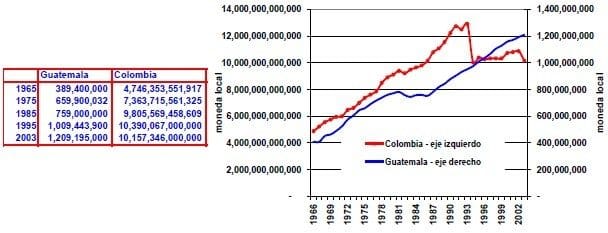
Valor agregado de la agricultura en moneda local corrientes
Fuente: Banco Mundial
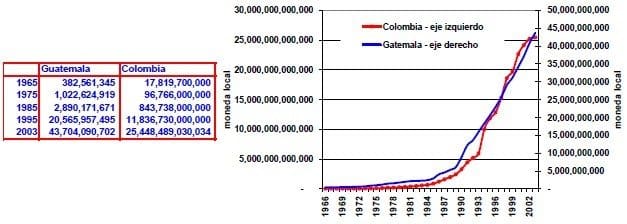
Valor agregado de la agricultura crecimiento anual (%)
Fuente: Banco Mundial
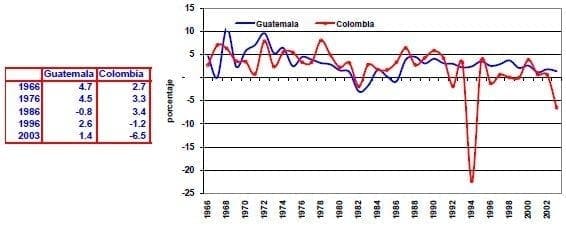
Valor agregado de la agricultura como porcentaje del PIB
Fuente: Banco Mundial
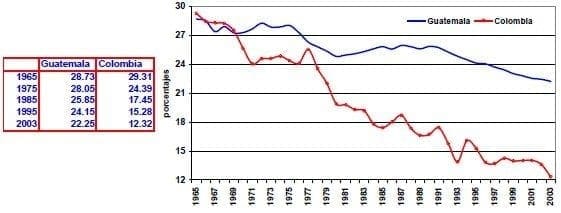
Valor agregado de la agricultura por trabajador (US$ constantes de 2000) *
Fuente: Banco Mundial
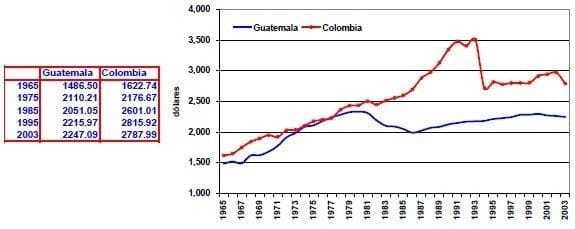
* Agriculture value added per worker is a measure of l productivity. Value added in agriculture measures the output of the l sector (ISIC divisions 1-5) less the value of intermediate inputs. Agriculture comprises value added from forestry, hunting, and fishing as well as cultivation of crops and livestock production. Data are in constant 2000 U.S. dollars.
Sector agropecuario entre Colombia y Guatemala
Área de tierras (hectáreas)
Fuente: Banco Mundial
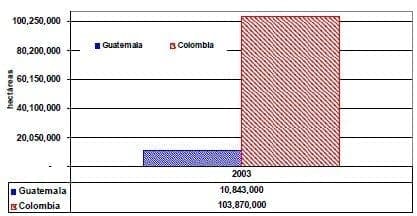
Tierra arable (hectáreas)
Fuente: Banco Mundial
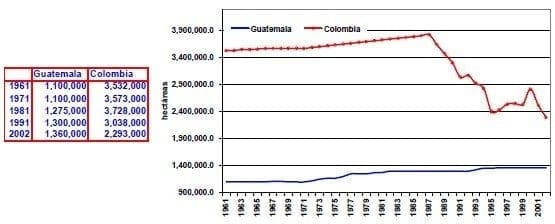
Tierra arable (% de área de tierra)
Fuente: Banco Mundial
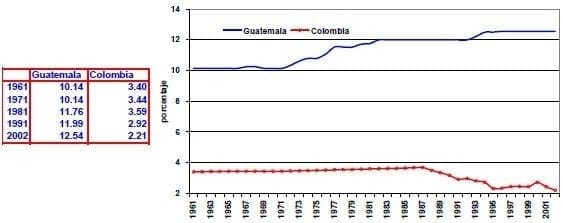
Tierra irrigada (hectáreas)
Fuente: Banco Mundial
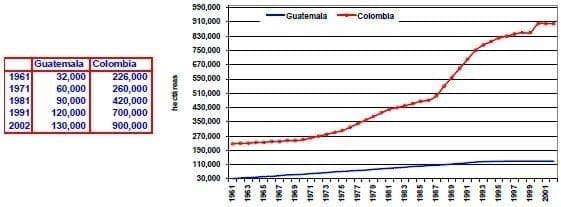
Área de tierra irrigada (% de la tierra cosechada)
Fuente: Banco Mundial
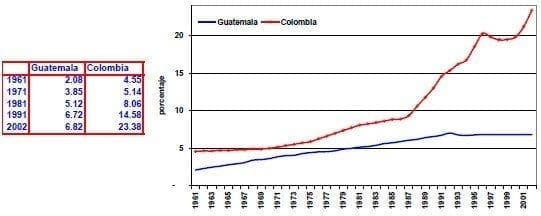
Área en producción de cereales (hectáreas)
Fuente: Banco Mundial
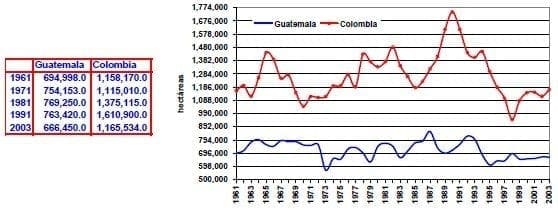
Producción de cereales (toneladas métricas) *
Fuente: Banco Mundial
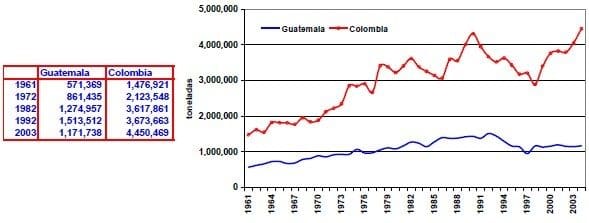
* Cereal production (metric tons) refer to crops harvested for dry grain only. Cereal crops harvested for hay or harvested green for food, fee, or silage and those used for grazing are excluded.
Rendimientos en cereales (kilogramos por hectárea) *
Fuente: Banco Mundial
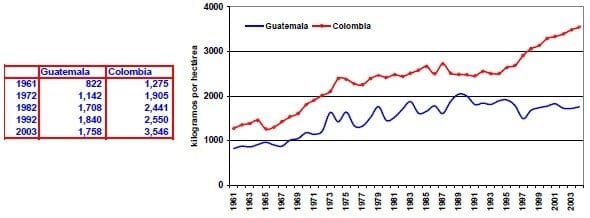
* Cereal yield, measured as kilograms per hectare of harvested land, includes wheat, rice, maize, barley, oats, rye, millet, sorghum, buckwheat, and mixed grains. Production data on cereals relate to crops harvested for dry grain only. Cereal crops harvested for hay or harvested green for food, feed, or silage and those used for grazing are excluded.
Maquinaria agrícola y tractores
Fuente: Banco Mundial
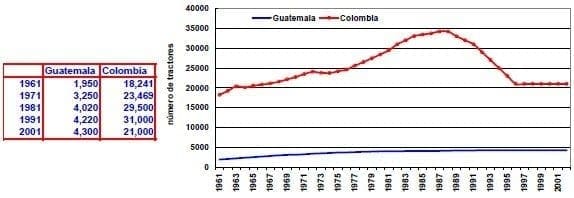
Maquinaria agrícola, tractores por hectárea de tierra arable
Fuente: Banco Mundial

Consumo de fertilizantes (100 de gramos por hectárea arable) *
Fuente: Banco Mundial
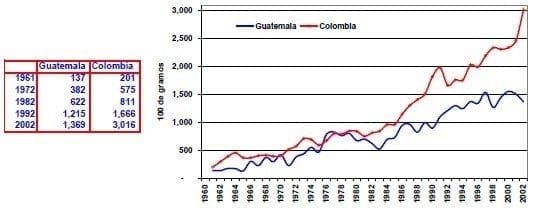
* Fertilizer consumption (100 grams per hectare of arable land) measures the quantity of plant nutrients used per unit of arable land. Fertilizer products cover nitrogenous, potash, and phosphate fertilizers (including ground rock phosphate). The time reference for fertilizer consumption is the crop year (July through June). Arable land includes land defined by the FAO as land under temporary crops (double-cropped areas are counted once), temporary meadows for mowing or for pasture, land under market or kitchen gardens, and land temporarily fallow. Land abandoned as a result of shifting cultivation is excluded.).
Materias primas agrícolas exportadas (% de las mercancías exportadas) *
Fuente: Banco Mundial
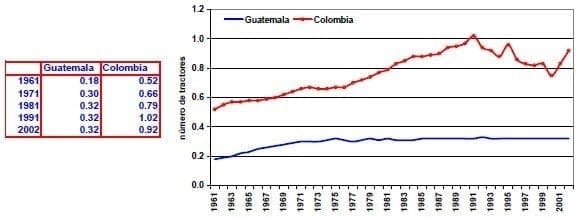
* l raw materials comprise SITC section 2 (crude materials except fuels) excluding divisions 22, 27 (crude fertilizers and minerals excluding coal, petroleum, and precious stones), and 28 (metalliferous ores and scrap).
Materias primas agrícolas importadas (% de las mercancías exportadas) *
Fuente: Banco Mundial
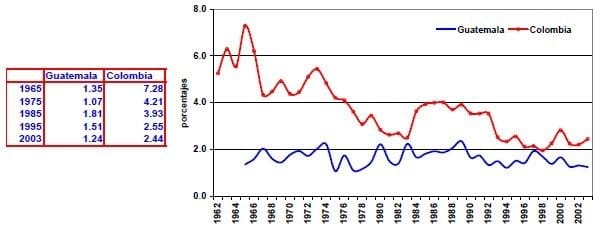
* l raw materials comprise SITC section 2 (crude materials except fuels) excluding divisions 22, 27 (crude fertilizers and minerals excluding coal, petroleum, and precious stones), and 28 (metalliferous ores and scrap).
Índice de producción de cosechas (base 1999-2001 = 100) *
Fuente: Banco Mundial
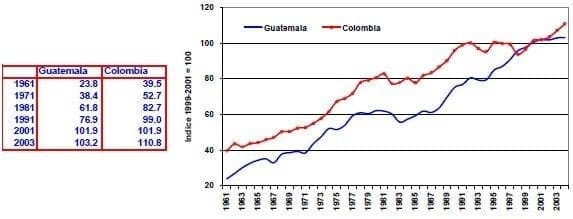
* Crop production index shows l production for each year relative to the base period 1989-91. It includes all crops except fodder crops. Regional and income group aggregates for the FAO’s production indexes are calculated from the underlying values in international dollars, normalized to the base period 1989-91.
Índice de producción de alimentos (base 1999-2001 = 100) *
Fuente: Banco Mundial
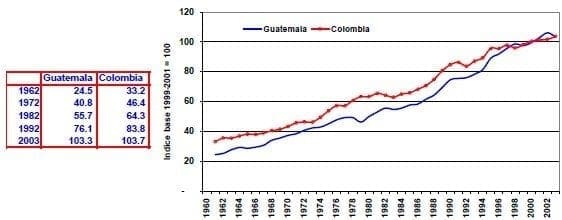
* Food production index covers food crops that are considered edible and that contain nutrients. Coffee and tea are excluded because, although edible, they have no nutritive value. FAO
Índice de precios de alimentos (base 2000 = 100) *
Fuente: Banco Mundial
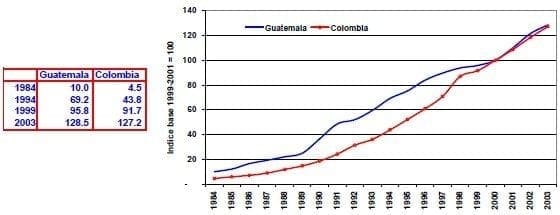
* Food production index covers food crops that are considered edible and that contain nutrients. Coffee and tea are excluded because, although edible, they have no nutritive value. FAO
Indice de producción ganadera (1999-2001=100)*
Fuente: Banco Mundial
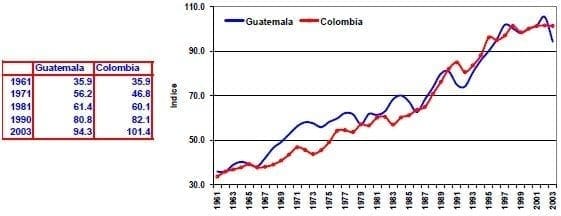
* Livestock production index includes meat and milk from all sources, dairy products such as cheese, and eggs, honey, raw silk, wool, and hides and skins. FAO
Pastos permanentes (% del área de tierra)*
Fuente: Banco Mundial
